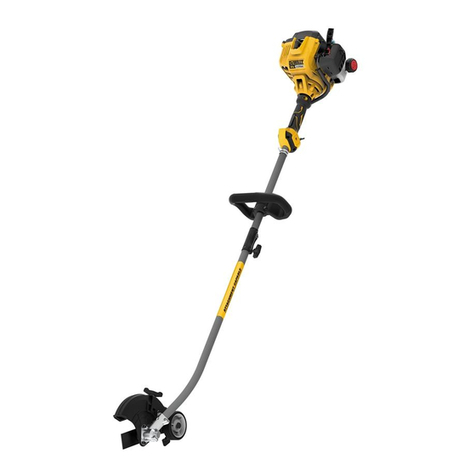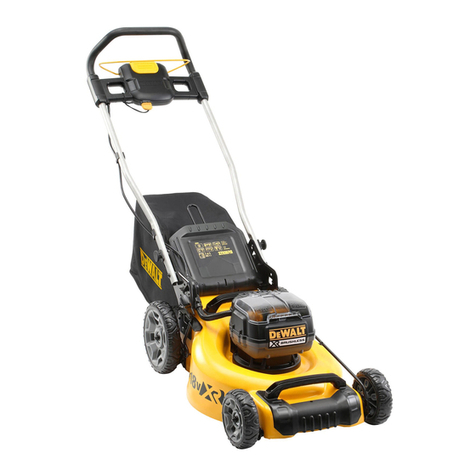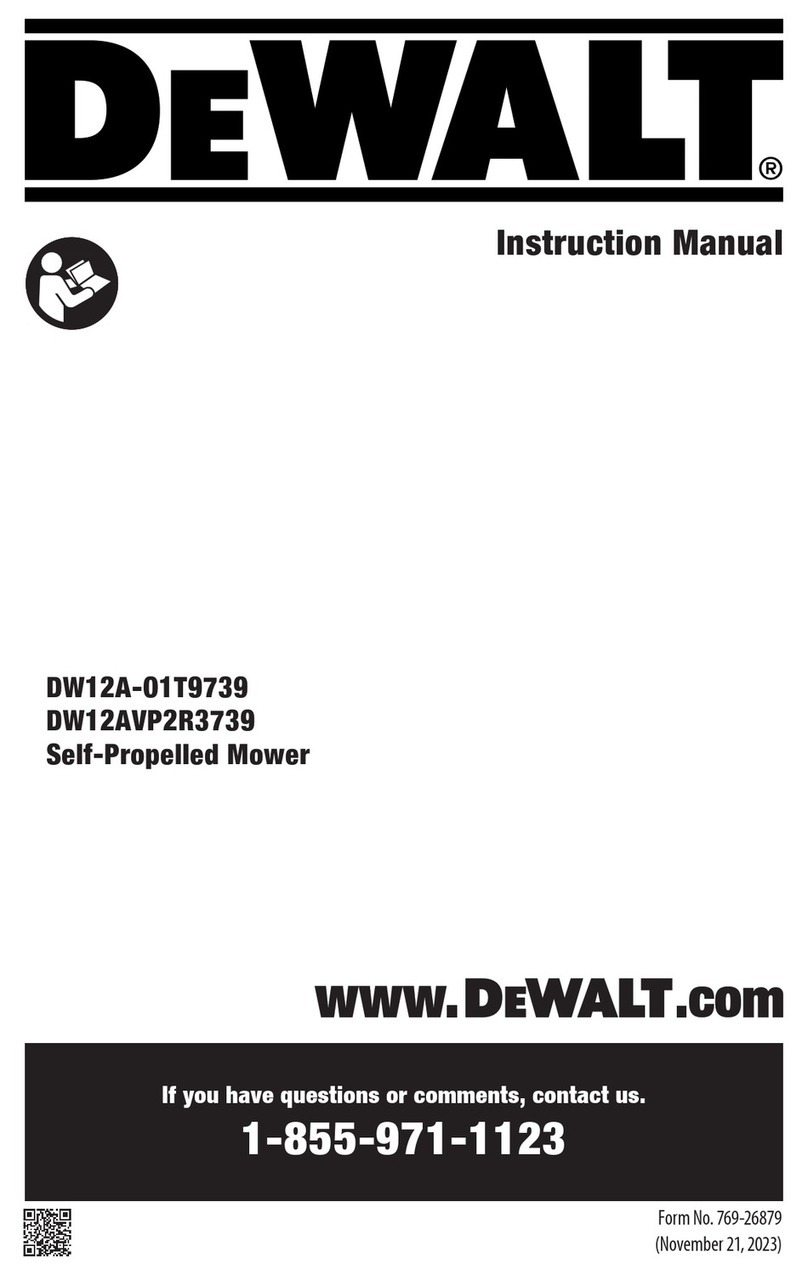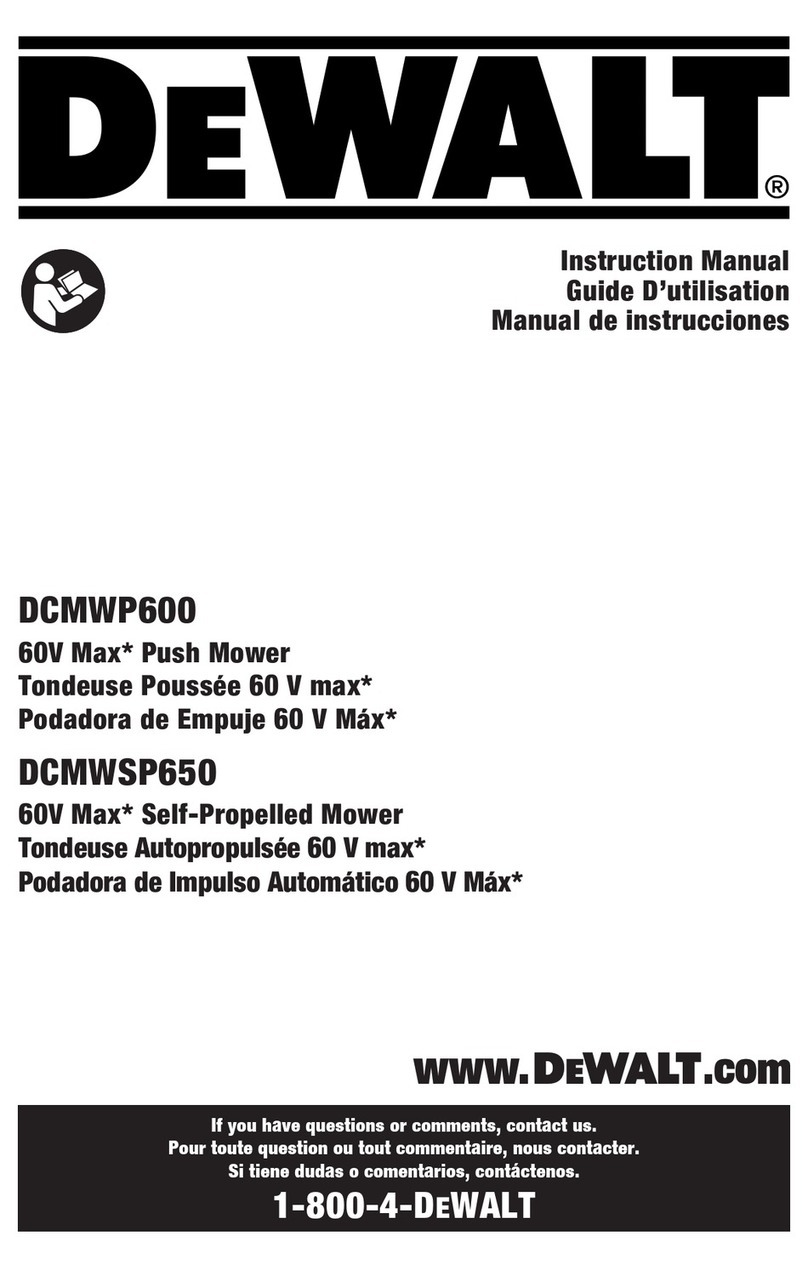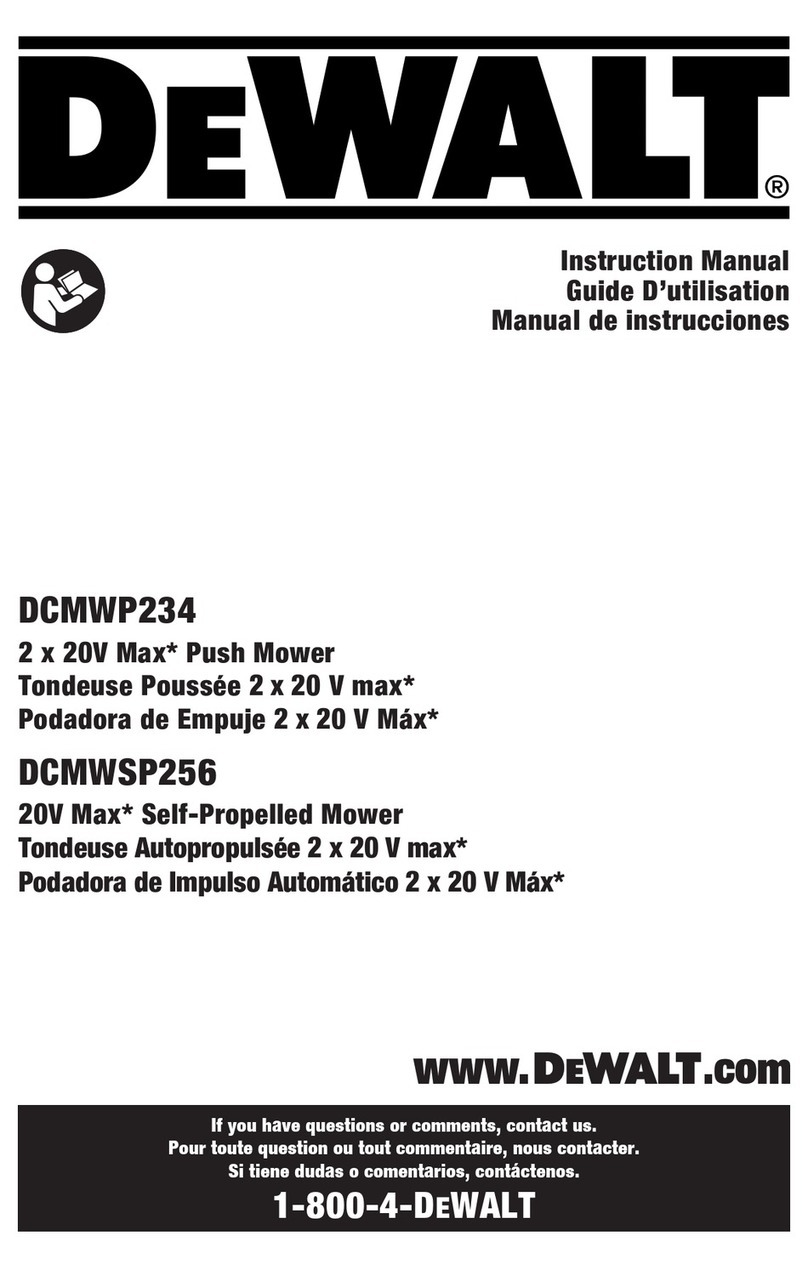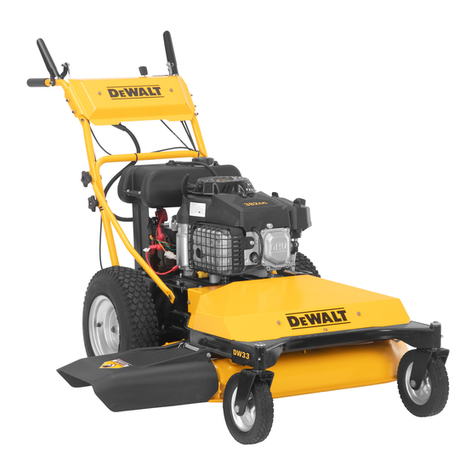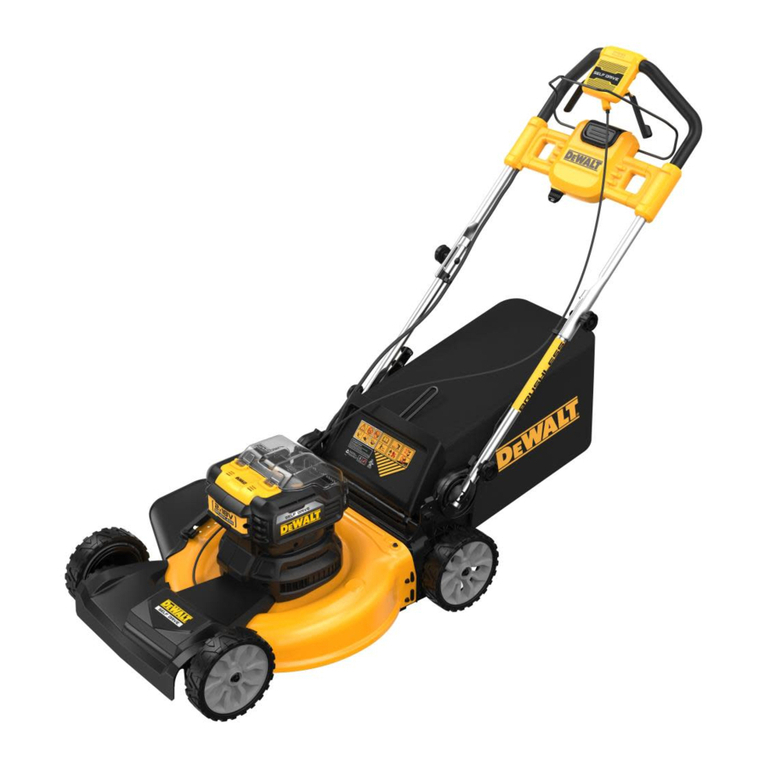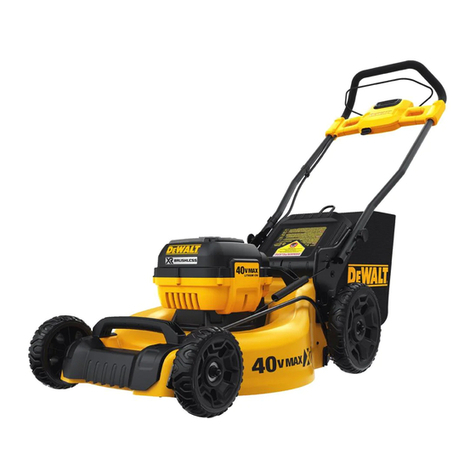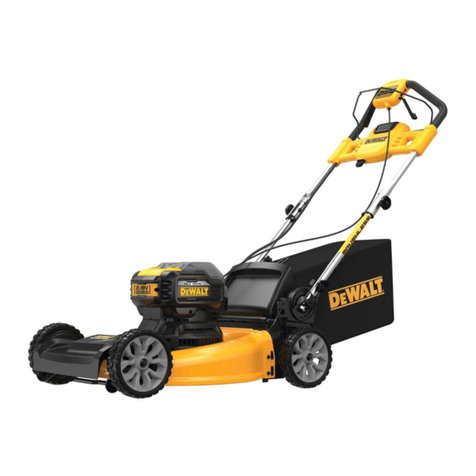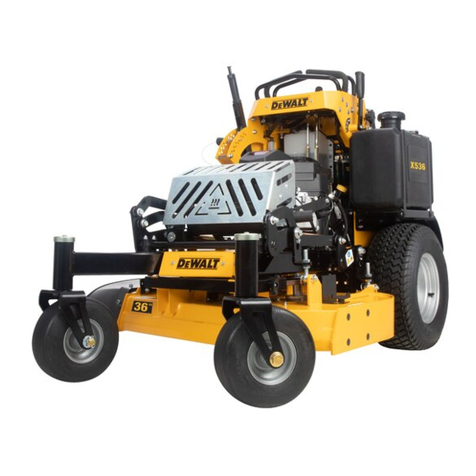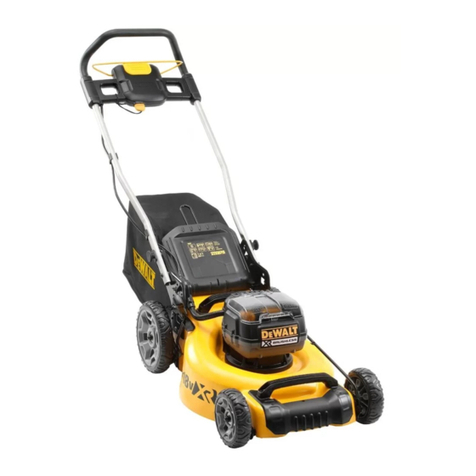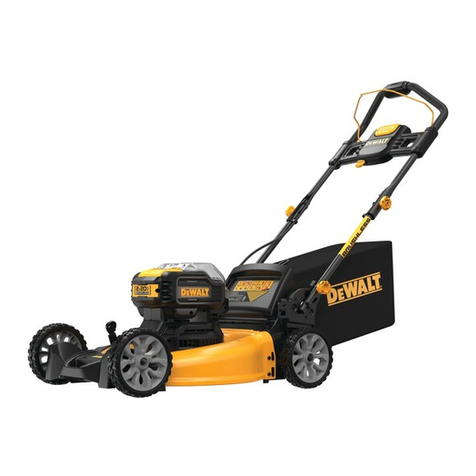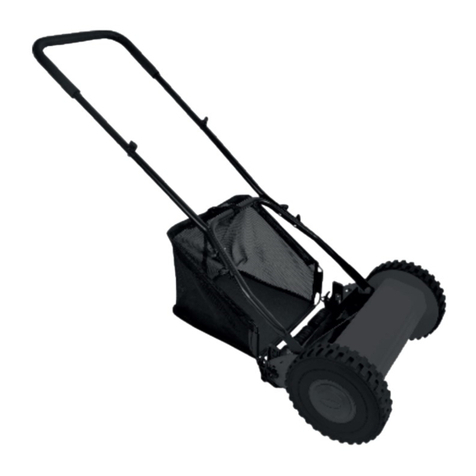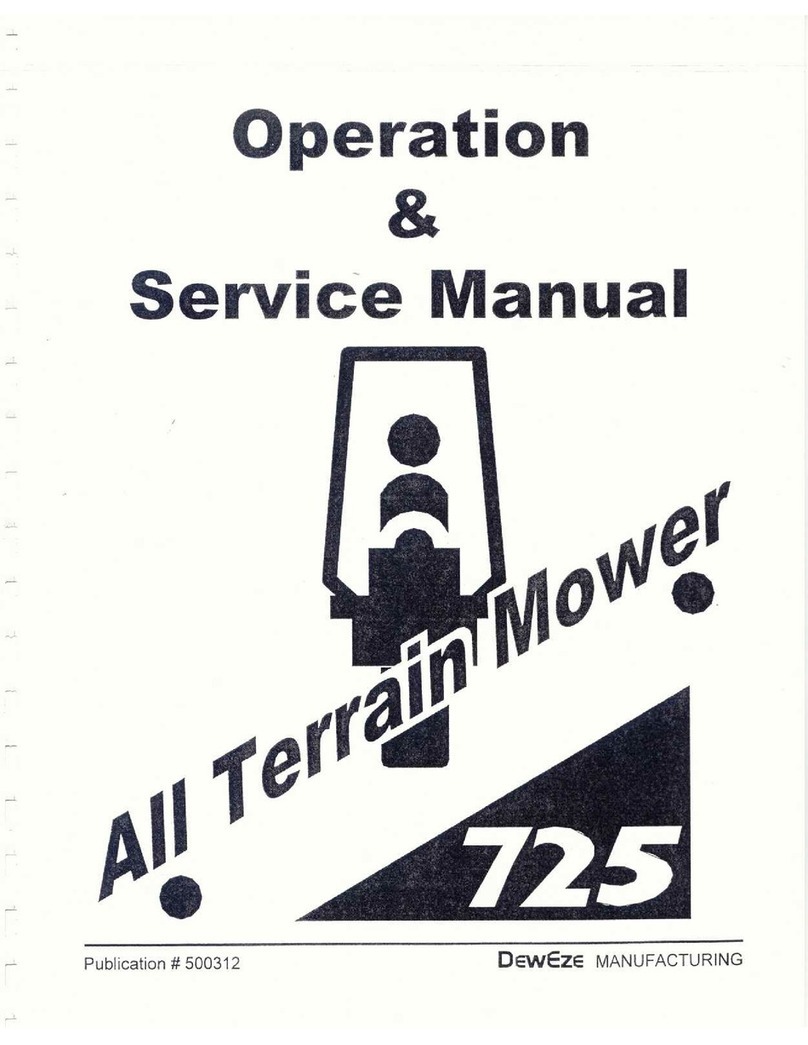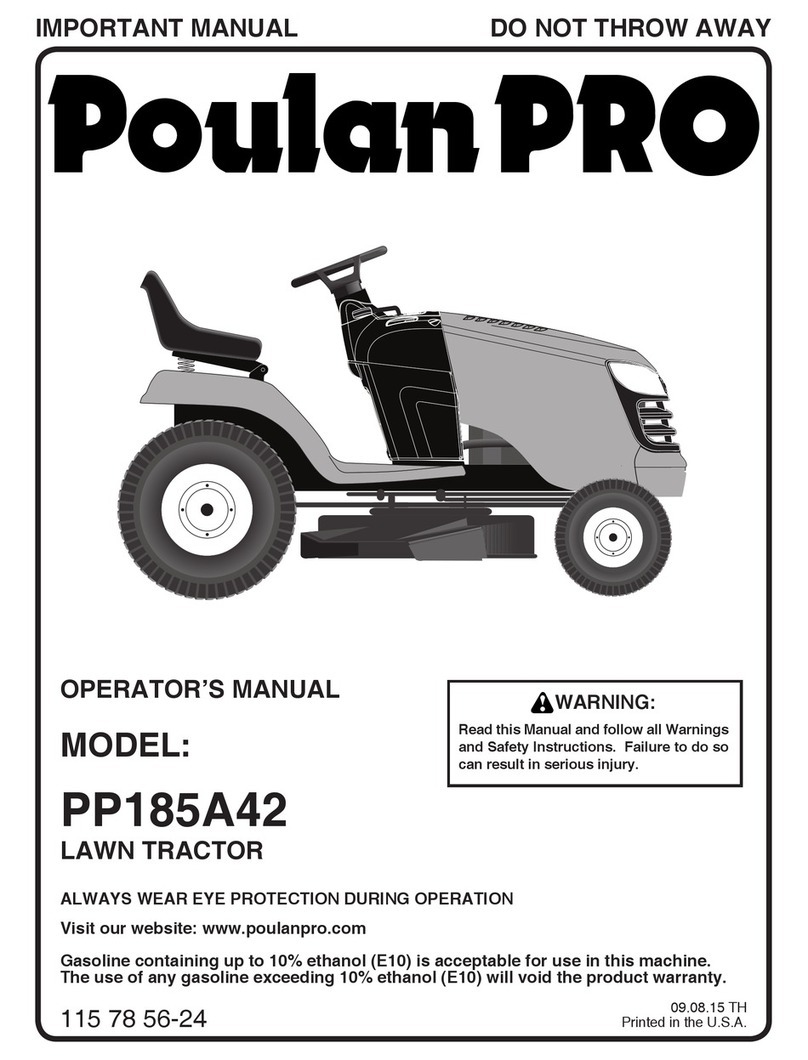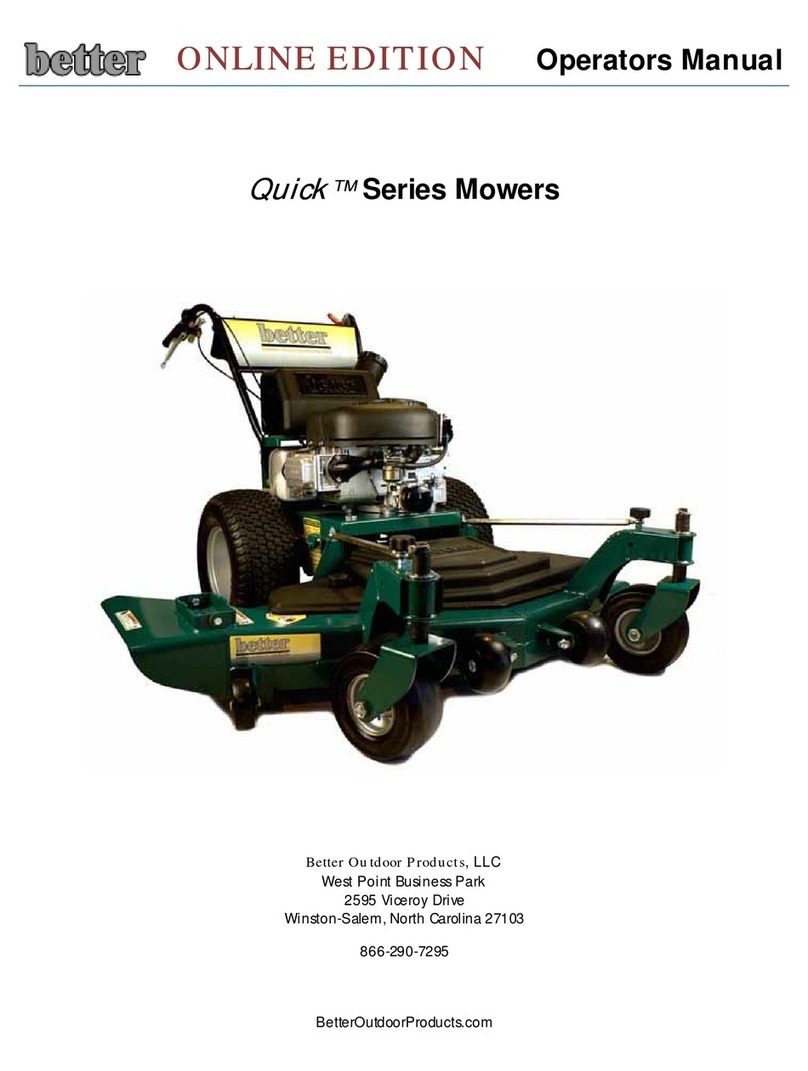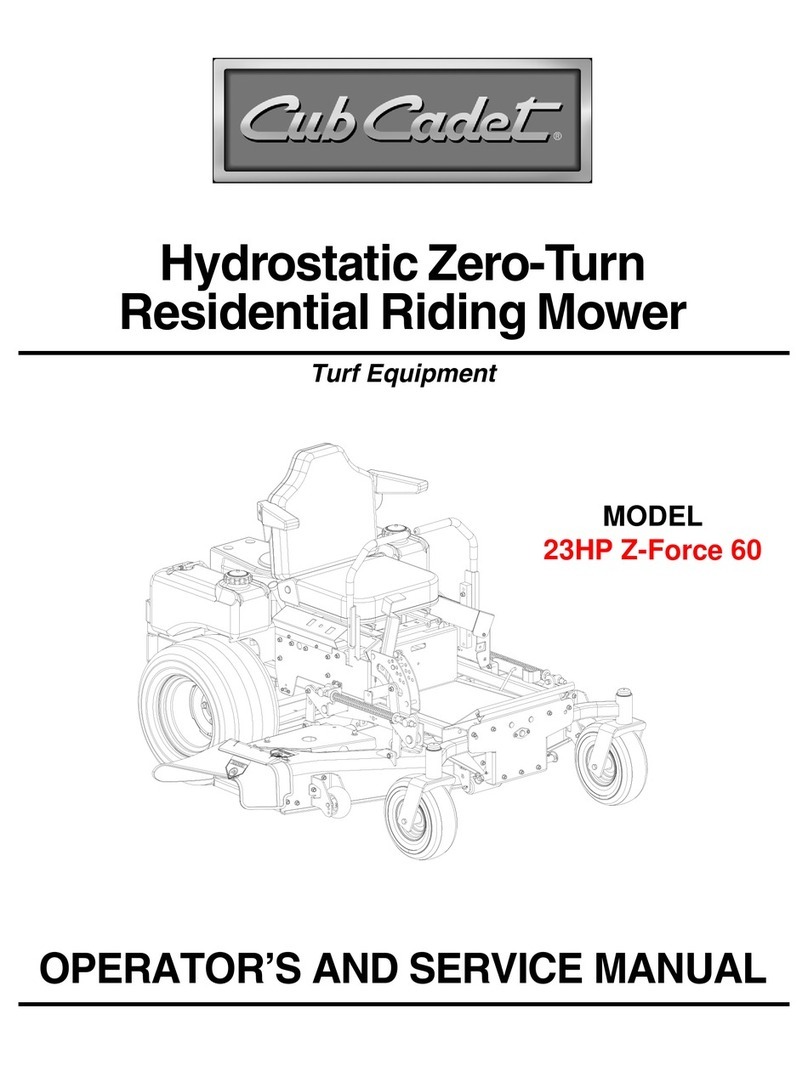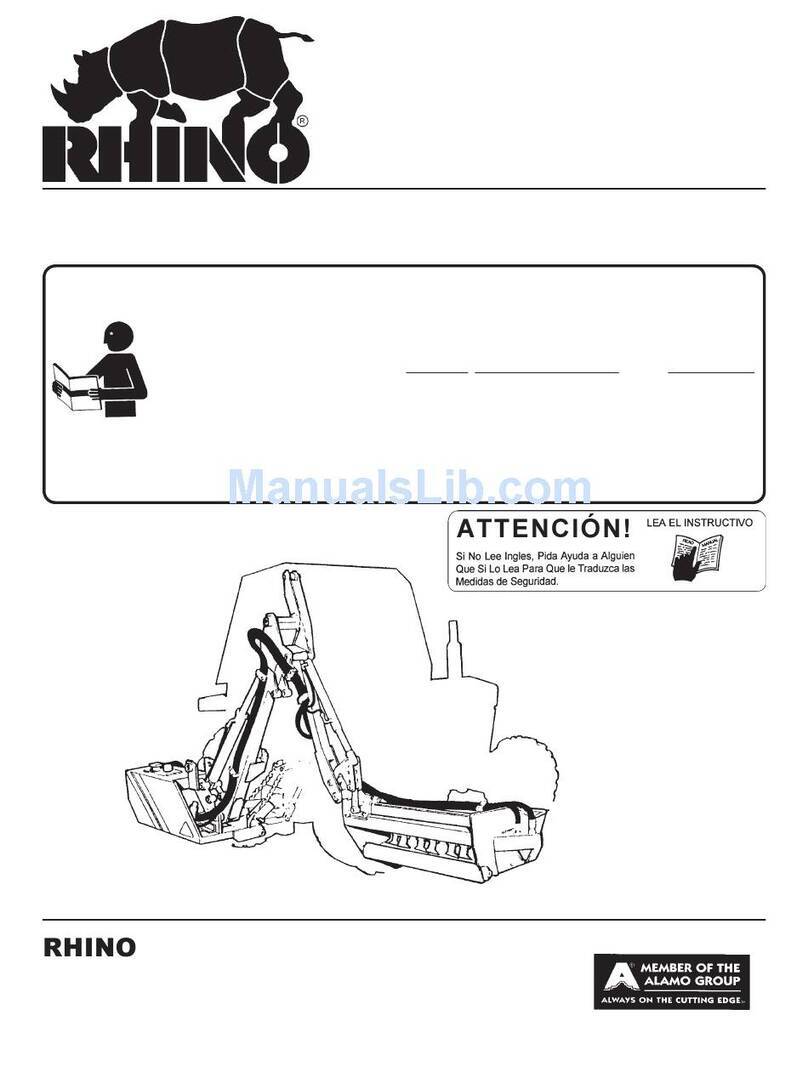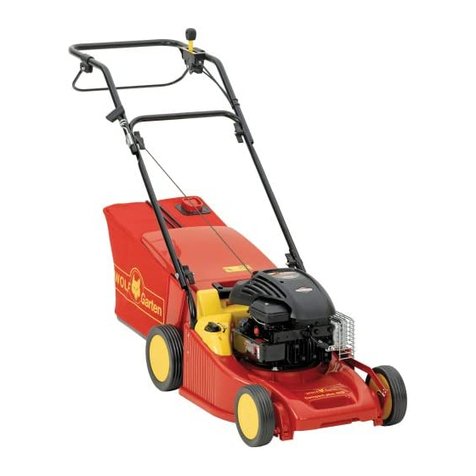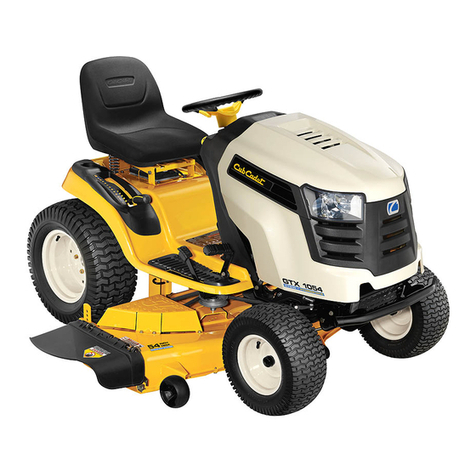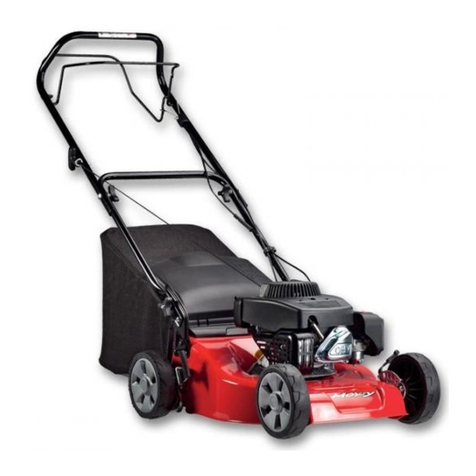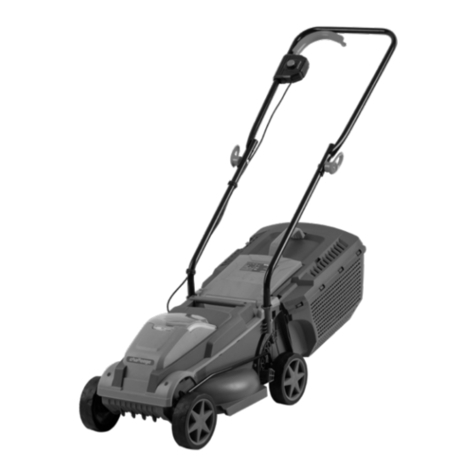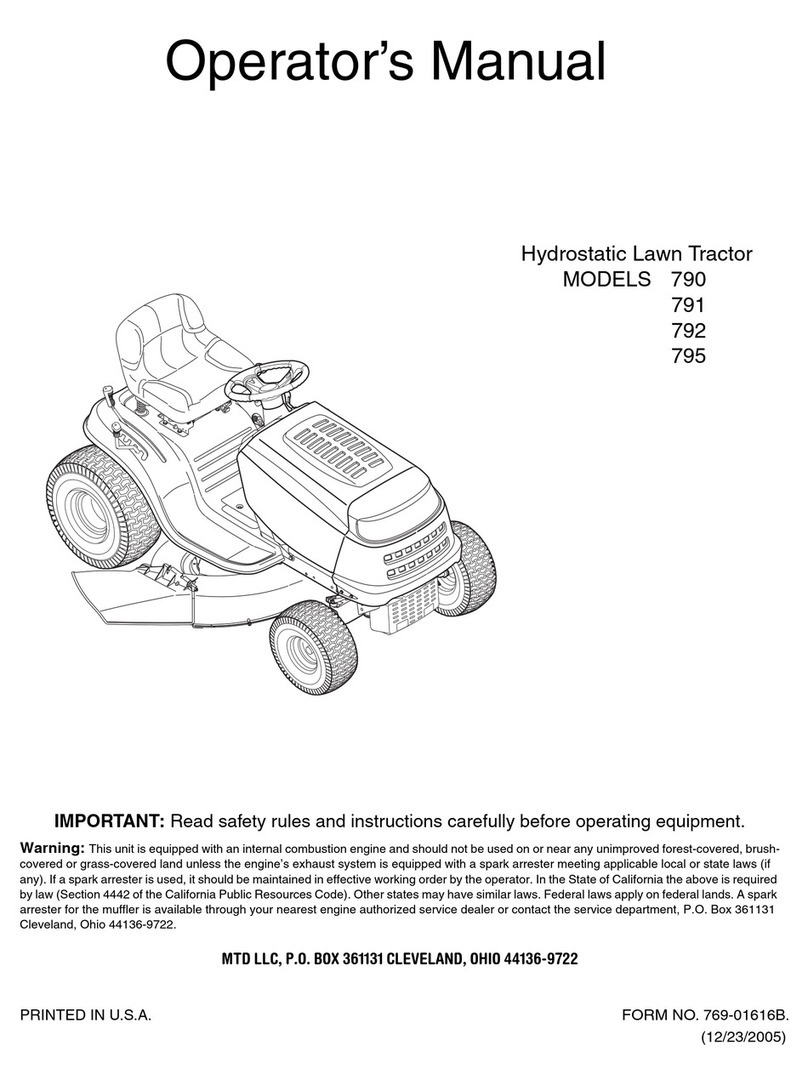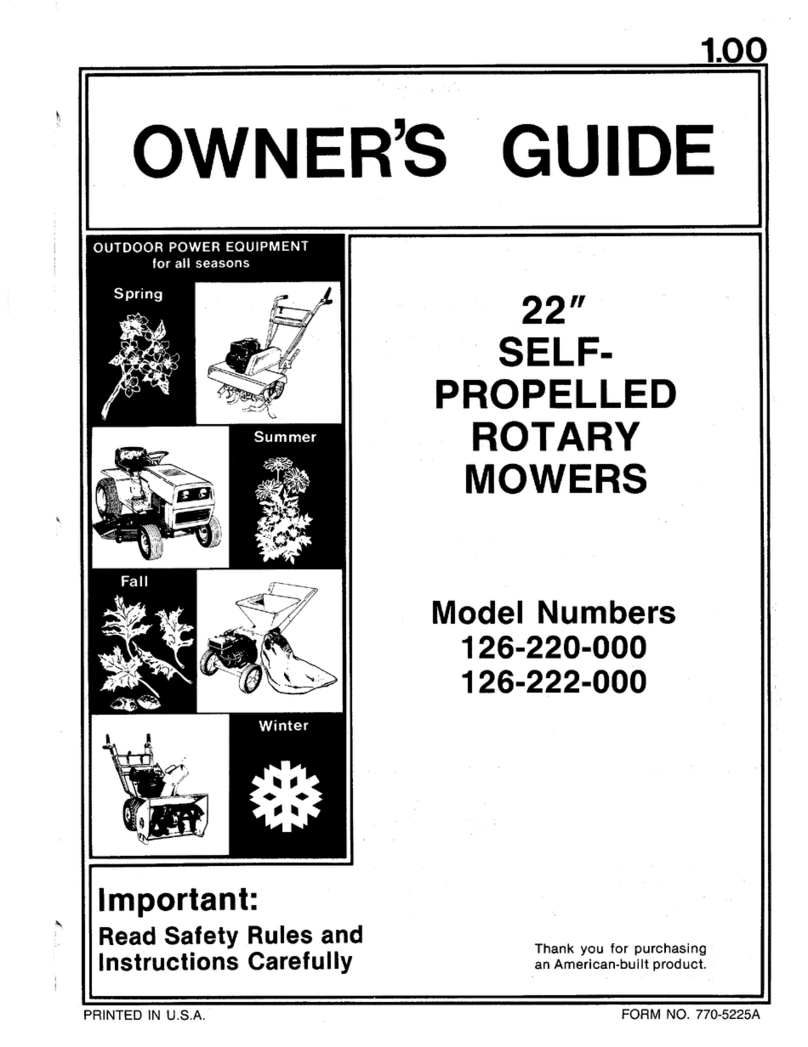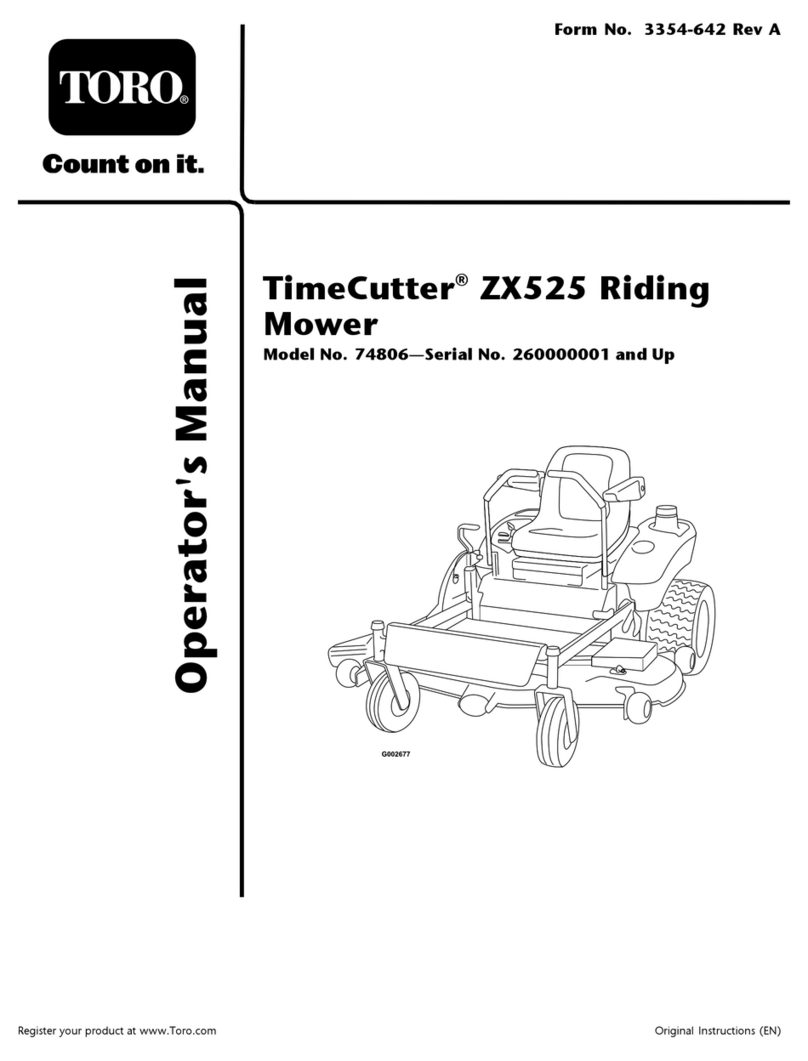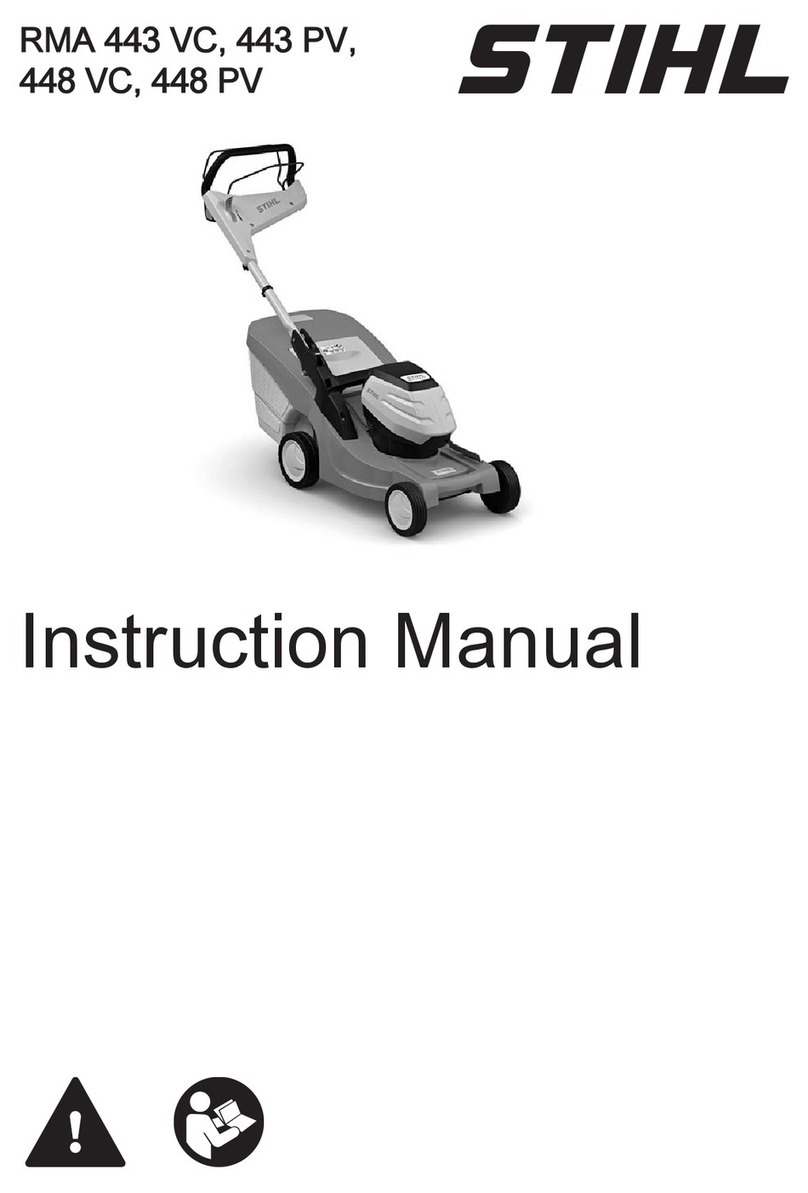
ENGLISH
2
SAVE THESE INSTRUCTIONS
SAFE OPERATION PRACTICES
DANGER: This machine was built to be operated according to the safe
operation practices in this manual. As with any type of power equipment,
carelessness or error on the part of the operator can result in serious injury.
This machine is capable of amputating hands and feet and throwing
objects. Failure to observe the following safety instructions could result in
serious injury or death.
WARNING: CALIFORNIA PROPOSITION 65 - Engine exhaust, some of its
constituents, and certain vehicle components contain or emit chemicals
known to the State of California to cause cancer and birth defects or other
reproductive harm.
Battery posts, terminals, and related accessories contain lead and lead
compounds, chemicals known to the State of California to cause cancer and
reproductive harm. Wash hands after handling.
WARNING: This symbol points out important safety instructions which,
if not followed, could endanger the personal safety and/or property
of yourself and others. Read and follow all instructions in this manual
before attempting to operate this machine. Failure to comply with these
instructions may result in personal injury. When you see this symbol. HEED
ITS WARNING!
General Operation
1. Read this operator’s manual carefully in its entirety before attempting to assemble
this machine. Read, understand, and follow all instructions on the machine and in
the manuals before operation. Keep this manual in a safe place for future and regular
reference and for ordering replacement parts.
IMPORTANT! If the operator cannot read English or Spanish, the owner is responsible for
explaining the information in this manual.
2. Be completely familiar with the controls and the proper use of this machine before
operating it.
3. This machine is a precision piece of power equipment, not a plaything. Therefore,
exercise extreme caution at all times. This machine has been designed to perform one
job: to mow grass. Do not use it for any other purpose.
4. Do not allow anyone to operate or maintain this machine who has not read the
manual. Never allow children under 16 years of age to operate this machine.
5. Only responsible individuals who are familiar with these rules of safe operation should
be allowed to use this machine.The owner is responsible for training the users, and is
responsible for accidents or injuries occurring to themselves or others.
6. Thoroughly inspect the area where the equipment is to be used. Remove all stones,
sticks, wire, bones, toys, and other foreign objects, which could be tripped over or
picked up and thrown by the blade. Thrown objects can cause serious personal injury.
7. Plan your mowing pattern to avoid discharge of material toward roads, sidewalks,
bystanders, and the like. Also, avoid discharging material against a wall or obstruction,
which may cause discharged material to ricochet back toward the operator.
8. To help avoid blade contact or a thrown object injury, stay in operator zone behind
handles and keep children, bystanders, helpers, and pets at least 75 feet (23 meters)
from mower while it is in operation. Stop machine if anyone enters area.
9. Always wear safety glasses or safety goggles during operation and while performing
an adjustment or repair to protect your eyes. Thrown objects which ricochet can
cause serious injury to the eyes.
10. Wear sturdy, rough-soled work shoes and close-fitting slacks and shirts. Shirts and
pants that cover the arms and legs and steel-toed shoes are recommended. Never
operate this machine in bare feet, sandals, slippery, or light-weight (e.g. canvas) shoes.
11. Do not put hands or feet near rotating parts or under the cutting deck. Contact with
blade can amputate fingers, hands, toes, and feet.
12. A missing or damaged discharge cover can cause blade contact or thrown
object injuries.
13. Many injuries occur as a result of the mower being pulled over the foot during a fall
caused by slipping or tripping. Do not hold on to the mower if you are falling; release
the handle immediately.
14. Do not operate the mower while under the influence of alcohol or drugs.
15. Do not allow anyone to ride on this mower. No passengers.
16. Do not engage the self-propelled mechanism on machines so equipped while
starting engine.
17. Slow down before turning. Operate the machine smoothly. Avoid erratic operation
and excessive speed.
18. The operator presence control levers located at each handle are designed for your
safety. Do not try to defeat their operation. If the blade clutch is engaged or the
transmission is in gear, releasing both handles will shut off the mower’s engine.
19. Never operate the mower in wet grass. Always be sure of your footing. A slip and
fall can cause serious personal injury. If you feel you are losing your footing, release
the blade control handle immediately and the blade will stop rotating within
seven seconds.
20. Mow only in daylight or good artificial light. Walk, never run.
21. Stop the blade when crossing gravel drives, walks, or roads.
22. Always keep both hands on the handles when mowing. Always walk, never run.
23. Never engage the blade clutch when the engine is running unless you are on grass
that you intend to mow.
24. Never raise the mower deck while the blades are rotating.
25. Never walk or stand on the discharge side of a mower with the engine running.
Disengage the blade clutch if another person approaches while you are operating
a mower.
26. Never leave the mower unattended without disengaging the blade clutch, shifting
the transmission into neutral, placing the neutral latch levers in the neutral lock
position, shutting off the engine, and removing the key from the ignition switch.
27. Always park the mower and start the engine on a level surface with the transmission
in neutral, the blade clutch disengaged, and the neutral latch levers in the neutral
lock position.
28. If the equipment should start to vibrate abnormally, stop the engine and check
immediately for the cause.Vibration is generally a warning of trouble.
29. Shut the engine off and wait until the blade comes to a complete stop before
removing the grass catcher or unclogging the chute. The cutting blade continues to
rotate for seven seconds after the blade control is released. Never place any part of
the body in the blade area until you are sure the blade has stopped rotating.
30. Never operate mower without proper trail shield, discharge cover, grass catcher, blade
control handle, or other safety protective devices in place and working. Never operate
mower with damaged safety devices. Failure to do so can result in personal injury.
31. Muffler and engine become hot and can cause a burn. To avoid serious burns, do not
touch the engine or muffler while the engine is running or until it has cooled for at
least 30 minutes after it has been shut off.
32. Never attempt to make a wheel or cutting height adjustment while the engine
is running.
33. Only use parts and accessories made for this machine by the manufacturer. Failure to
do so can result in personal injury.
34. On pull-start models, when starting engine, pull cord slowly until resistance is felt,
then pull rapidly. Rapid retraction of starter cord (kickback) will pull hand and arm
toward engine faster than you can let go. Broken bones, fractures, bruises, or sprains
could result.
35. When operating this machine in the forward or reverse direction, do not allow the
ground speed control levers to return to the neutral position on their own. Always
maintain a firm grip on the levers, operate them smoothly and avoid any sudden
movements of the levers when starting or stopping.
36. If situations occur which are not covered in this manual, use care and good
judgement. Contact Customer Support for assistance or the name of the nearest
service dealer.
Slope Operation
Slopes are a major factor related to slip and fall accidents, which can result in severe
injury. Operation on slopes requires extra caution. If you feel uneasy on a slope, do not
mow it. For your safety, use the slope gauge included as part of this manual to measure
slopes before operating this machine on a sloped or hilly area. If the slope is greater than
15° (25%), do not mow it.
Do:
1. Mow across the face of slopes; never up and down. Always turn up hill. Exercise
extreme caution when changing direction on slopes.
2. Watch for holes, sprinkler heads, ruts, rocks, hidden objects, or bumps which can
cause you to slip or trip. Tall grass can hide obstacles.
3. Always be sure of your footing. A slip and fall can cause serious personal injury. Check
the area thoroughly before mowing. Slow down and use extra care.
Do Not:
1. Do not mow near drop-offs, ditches, or embankments, you could lose your footing
or balance.
2. Do not mow slopes greater than 15° (25%) as shown on the slope gauge.
3. Do not mow on wet grass. Unstable footing could cause slipping.
WARNING: Do not mow up and down the slope. You could slip and slide into
the mower, or the mower could lose traction and steering control.

